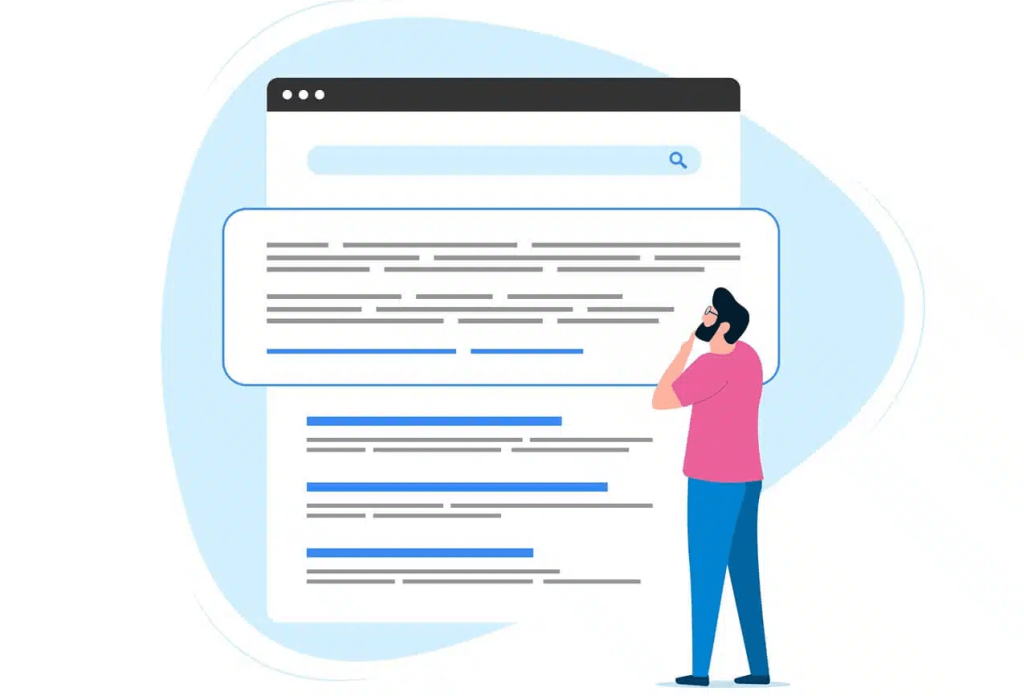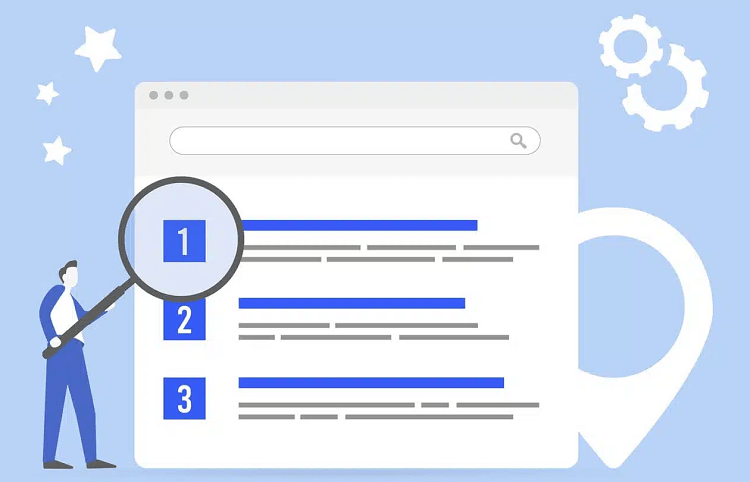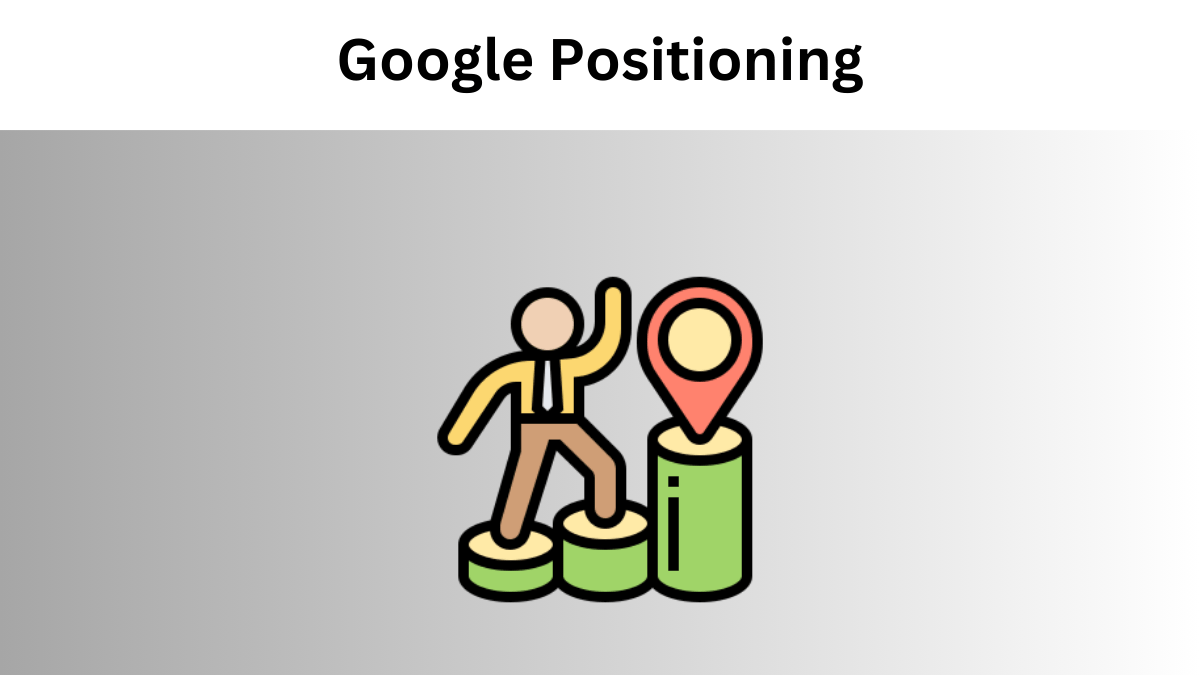Understanding Google Positioning: Definition, Criteria, Actions and Monitoring
If content is king and writing is queen in the world of SEO, we are missing one element to complete this indexing duo: the answer probably lies in the Google positioning of your site’s pages.
Write, proofread, publish, edit… You have invested in resources and training and are ready to boost your site. New strategic pages, editorial planning for your blog, nothing is holding you back. But how will you know if your page is in the top 3 or at the bottom of Google’s results ranking? The SEO agency MexSEO focuses on this last step, identifying Google’s ranking factors and, above all, the tools to track your positions and measure the results of your work.
Contents
What is Google positioning?
Google ranking refers to the position a website occupies in Google search results for a specific keyword. This position depends on many SEO factors) such as content quality, technical optimization, backlink authority, and user experience. Good positioning improves the visibility and traffic of the site, thus attracting more visitors. The goal is to appear at the top of the results to maximize the click-through rate, online awareness, and, by extension, your turnover.
Why is it so important to be well-positioned on Google?
Google positioning, or natural referencing (SEO), is essential for attracting qualified traffic and increasing a company’s online visibility.
1st reason: the higher you are, the more you are seen, the more likely you are to be chosen
Math, basic, this is the first moral of the SEO story. If Google positioning or “ranking” was random, SEO would not exist. In B2B, studies show that the first positions on Google capture the majority of clicks: the first result gets about 31.7% of clicks, the second 24.7%, and the third 18.6%. Beyond the first page, click rates drop drastically.
2nd reason: being visible makes your business credible
Being well-positioned improves visibility and the credibility perceived by users. A good positioning offers a significant competitive advantage and long-term profitability because maintaining a high position often costs less than continuous advertising campaigns.
In addition, if Google positions us in the top 3 on a popular query, and we stay there for a while, an objective interpretation can be imposed: our two targets find us attractive. Google appreciates our URL because we provide an interesting answer for the Internet user, and this Internet user appreciates our content and even triggers some actions from this URL to the Holy Grail: conversion.

3rd reason: Google positioning and conversions are measurable
SEO performance can be measured and adjusted using analytical tools such as Google Analytics, Google Search Console, and SEMrush.
These tools allow you to track various key indicators, such as click-through rate (CTR), bounce rate, time spent on the page, conversions and especially the movements of your URL positions on such and such queries. By analyzing this data, you will be able to identify the strengths and areas for improvement in your SEO strategy.
For example, a drop in traffic on a specific page may indicate the need to update the content or improve technical optimization. This continuous analysis allows you to adjust strategies in real-time, ensuring constant improvement in search engine positioning and thus maximizing visibility and user engagement.
SEO is worked on from January to December and is based on habits, trends, and behaviors. It is constantly adapting.
“SEO is not dead”, and never will be.
Google Ranking Factors in 2025
Unfortunately, SEO is not an exact science. The popular myth was that until May 2024, Google’s algorithm only included 200 criteria. Since this leak a few weeks ago (thanks to Mike King, who published it), this number would be closer to… 14,000. Exhaustive but not really understandable. One thing to note: In this leak, no weighting of the criteria is specified. In summary, these elements mainly confirm certain criteria, of which we were almost sure of their relevance in the positioning.

Technical Optimization of the Site
Technical optimization of a site consists of improving its structure and performance to ensure better loading speed, smooth navigation and increased indexability by search engines. Since the famous leak, we know that the weighting of elements according to the font size is taken into account. Beyond the Hn tags, the font size and weight will influence the consideration of words and links.
Here are the main Google positioning criteria related to the site’s technique:
- Site structure: A clear architecture with well-defined navigation menus, clean URLs and optimized meshing helps Google understand the hierarchy of pages.
- URL Structure: URLs should be short, descriptive, and include relevant keywords.
- Indexing and crawling: Make sure all important pages are crawlable by Google via an XML sitemap file and a properly configured robots.txt file.
- Mobile compatibility: Responsive design for a good user experience on mobile.
- Site Security: Using HTTPS is a trust signal to Google. Users and search engines better perceive a secure site with an SSL certificate.
- Accessibility: Images should have alt tags describing their content and be compressed for better loading speed.
- Indexability: Ensure that all important pages are crawlable by Google via an XML sitemap file and a properly configured robots.txt file.

Content and semantics
Content and semantics optimization is a pains-taking job that involves creating relevant and well-structured texts to meet the needs of users and the requirements of search engines. It is the knowledge of your personas and the response to their problems or the search for solutions that we can provide them.
This involves the strategic use of keywords (and knowledge of certain tools to know the most popular ones), writing quality content (having time and skills) and the logical organization of information to provide a relevant response to our persona).
Here are the main Google positioning criteria related to content and semantics:
- Content quality: Unique, informative content that meets users’ search intent. Google favors pages that provide real added value.
- Content structure: Use headings and subheadings (H1, H2, etc.) to structure content and improve readability.
- Keyword and semantics: Proper use of primary and secondary keywords without over-optimization. Keywords should be naturally integrated into content, titles and tags.
- Originality of content: Unique content, avoiding duplicate content.
- Regular update: Google favors content that is updated regularly to stay relevant.
- Content Length: Texts long enough to cover topics in depth as long as it is useful to the reader.
- Tag optimization: Optimized meta title, description, and header tags (H1, H2, etc.).
User experience, the 4th pillar?
For several years, UX or user experience has been a trend that began to become popular a few years ago. This term, which comes more from marketing, can be summed up as follows: “ Focus on your customers first! ” For a website, user experience was mainly about having a site adapted to all reading media (responsive design), a secure site (ssl certificate), and fast loading of pages. This last point can be evaluated using the PageSpeed tool.

Google primarily responds to a need of its users: to find web pages that really correspond to their expectations. To do this, Google collects and uses user behavioral data, particularly on the engagement and preferences of Internet users.
Here are the main Google positioning criteria related to user experience (UX):
- Loading speed: A fast site improves the user experience and is favored by Google. The search engine is based on Core Web Vitals, specific metrics (LCP, FID, CLS) that measure the page’s loading speed, interactivity and visual stability. It is necessary to optimize images, reduce code and use CDNs.
- Bounce Rate: A high bounce rate can indicate that users are not finding what they are looking for, which is a negative signal to Google.
- Time spent on site: A high visit time is a good indicator of the quality and interest of the content offered.
- Number of page views: A high number of page views per session indicates engaging content and good navigation structure.
- Visit Frequency / Repeat Visitors: A high number of repeat visitors shows that the site offers content and features that keep users coming back.
- User Engagement: Measured by actions such as comments, shares, clicks on internal links, and interactions with multimedia content, engagement shows that users find value in the content offered.
Of all Google’s ranking criteria, this last pillar is the one that focuses the most effort on Search teams (and, therefore, the attention of SEOs). A new Google algorithm is at the heart of all the conjectures: Navboost. It consists of analyzing user interactions with search pages and their navigation.
Navboost, but what is it?
Navboost, a preview unveiled in 2023 by Pandu Nayak
Navboost is a machine learning algorithm developed by Google, designed to predict which websites a user might visit based on their past behavior. This technology was unveiled by Pandu Nayak, former vice president of search at Google, in October 2023 during a hearing before the US Department of Justice in the antitrust lawsuit against Google. Nayak also revealed that Navboost is one of Google’s most influential ranking factors. At the time of writing, Google has just lost its “antitrust” lawsuit against the US government. We will most certainly have the opportunity to return to this decision’s consequences.
User signals: the missing element in the SEO recipe?
The importance of user signals in Google’s ranking algorithm seems to be confirmed by the May 28, 2024 leak, where Navboost is mentioned nine times among the features revealed in Google’s internal search API documents. Navboost assigns scores to pages based on several factors, including:
- The frequency of visits for a given query
- Time spent on page
- The bounce rate
- User engagement (clicks, interactions, videos, etc.)
These signals allow Navboost to judge the quality and relevance of a web page, favoring those that best meet user expectations. As you will have understood, this new pillar of SEO ultimately seems to be the most central.
And the weight of pixel ranking in universal search?
What is Pixel Ranking?
The Pixel Ranking is the pixel measurement of a site’s position in search results. Unlike traditional page ranking, it evaluates visibility in terms of the height of the page occupied by the results.
The American giant, Google continues to experiment and introduce new features in its search engine in response to the constant evolution of searches and advances in machine learning. These innovations can sometimes completely transform the composition of the results pages (SERPs) and, consequently, modify the position of the organic results.
![]()
Importance of pixel ranking and how to optimize it
With Google Universal Search, results go beyond simple blue links to include images, videos, featured snippets, and other rich formats. Pixel Ranking is useful for assessing a page’s true visibility in this diverse context. Diversifying the types of content you publish and incorporating images, videos, and other media to appear in these different result formats is essential.
Using structured data via schema markup is also crucial to help Google understand and richly display your content. Finally, make sure your site is optimized for mobile devices, as Google now favors mobile-first indexing.
How to track and Monitor your Positioning on Google?
Many theories, techniques and definitions have been discussed so far. But once we have scrutinized, structured, written and published our content, we still have to analyze the last step: how my site is positioned on Google.
It is important to monitor the positioning of your pages based on the strategic keywords you have chosen. This is where the crux of the matter lies. Several tools are available to monitor Google positioning and their developments. In addition to the traditional free tools (Google Search Console, analytics, etc.) and paid tools such as SEMRush, Ahref, Rank, and Monitorank.
The final word
Google positioning is an essential factor in an SEO strategy for any company wishing to improve its online visibility (as well as its traffic and, ultimately, its leads).
First, it will be necessary to understand the life path of content, its usefulness and purpose, and how to write it to please visitors (and, therefore, Google). By understanding the different ranking factors and adopting best practices, you can increase your chances of appearing at the top of search results.
